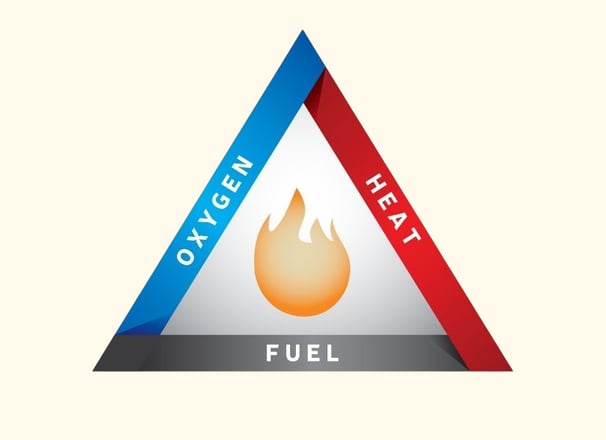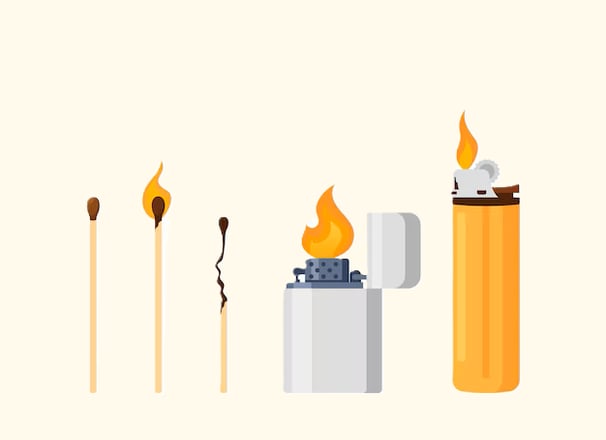Fire Starting
Learn how to start fires with minimal resources for warmth and cooking. In survival situations, being able to start a fire is essential. Fire provides warmth, light, and the ability to cook food, and can also be used for signalling or purifying water. However, starting a fire when resources are limited can be challenging. Here’s an explanation of how to start fires with minimal resources using different methods.
KNOW BASIC SURVIVAL SKILLS
12/10/20244 min read
Fire Starting
Learn how to start fires with minimal resources for warmth and cooking. In survival situations, being able to start a fire is essential. Fire provides warmth, light, and the ability to cook food, and can also be used for signalling or purifying water.
However, starting a fire when resources are limited can be challenging. Here’s an explanation of how to start fires with minimal resources using different methods.


1. Fire Starting Basics
Before diving into specific methods, it’s important to understand some key concepts:
Essential Fire Components:
Heat: The initial energy required to ignite the fuel.
Fuel: Material that burns, such as dry wood, leaves, or grass.
Oxygen: Air is necessary for the combustion process.
To successfully start a fire, dry materials are essential. Waterlogged wood or wet conditions can make it difficult, so always prioritize dry tinder, kindling, and fuel.
2. Methods to Start Fires with Minimal Resources
A. Using a Fire Starter (Matches, Lighter)
While not always available in a survival situation, matches and lighters are among the easiest tools to start a fire.
Steps:
Prepare Your Materials:
Gather dry tinder (such as dry grass, leaves, or cotton), kindling (small sticks or twigs), and fuel (larger pieces of wood).
Create a Fire Structure:
Build a teepee or log cabin structure with the kindling and fuel, leaving space for air to circulate.
Light the Tinder:
Use a match or lighter to ignite the tinder and ensure the flame spreads to the kindling.
Pros:
Fast and easy, ideal for emergencies.
Requires minimal skill.
Cons:
Matches and lighters can get wet or run out of fuel.
Not ideal for long-term survival without backup tools.
B. Using Flint and Steel
This method works by striking steel against flint (or similar hard rocks) to create sparks. It's an old but reliable fire-starting technique.
Steps:
Gather Materials:
Use dry tinder (such as cotton, birch bark, or dry grass).
Flint and a steel striker are needed.
Position the Tinder:
Place the tinder in a small pile or nest.
Create Sparks:
Strike the steel against the flint at an angle, creating sparks that land on the tinder.
Blow Gently:
Once the tinder catches fire, gently blow on it to build the flame.
Pros:
Can work in wet conditions if the tinder is dry.
Reusable and reliable if done correctly.
Cons:
Requires practice and skill.
May take longer compared to matches or a lighter.
C. Using a Bow Drill
A bow drill uses friction to generate heat, creating an ember that can be transferred to your tinder. It’s one of the most primitive fire-starting methods but requires patience and practice.
Materials Needed:
Bow: A flexible branch with a string attached (like cordage or even shoe laces).
Spindle: A straight, dry stick.
Fireboard: A flat, dry piece of wood.
Tinder: Dry, flammable material.
Steps:
Prepare the Fireboard:
Cut a small notch and a hole in the fireboard where the spindle will rotate.
Set Up the Bow and Spindle:
Place the spindle in the hole of the fireboard. Hold one end with your hand and use the bow to rotate it back and forth.
Generate Friction:
Move the bow back and forth, spinning the spindle rapidly. The friction will create heat and produce an ember in the notch of the fireboard.
Transfer the Ember:
Once an ember forms, carefully transfer it to your tinder and blow gently to ignite the fire.
Pros:
Doesn’t require any modern tools.
Can be done with natural materials found in the wild.
Cons:
Requires a lot of effort and practice.
Can be difficult to do in wet or cold conditions.
D. Using a Solar Fire Starter
If you are in an area with strong sunlight, you can use a magnifying glass or other reflective materials (such as a piece of clear plastic or the lens of a flashlight) to focus sunlight onto a tinder, starting a fire.
Steps:
Gather Your Tinder:
Use dry materials like leaves, grass, or dry moss.
Focus on the Sunlight:
Hold the magnifying glass or lens above the tinder and direct the focused beam of light onto the tinder.
Ignite the Tinder:
Wait for the tinder to catch fire and gently blow on it to strengthen the flame.
Pros:
No need for fuel or physical effort.
Great for sunny weather.
Cons:
Not reliable in cloudy or rainy conditions.
Requires a reflective tool or material.
E. Fire Plough (Primitive Method)
The fire plough method involves scraping a dry stick along a dry, flat surface to create friction that generates heat. It’s a more primitive method, often used in emergency situations.
Steps:
Prepare a Dry Surface:
Find a dry, flat, wooden surface (such as a flat log or dry board).
Scrape the Stick:
Using a dry, hard stick, scrape it along the surface, creating friction and heat.
Collect the Ember:
Once an ember forms, carefully transfer it to your tinder and blow gently to ignite the fire.
Pros:
Simple and uses natural materials.
Doesn’t require modern tools.
Cons:
Time-consuming and challenging.
Requires a lot of effort and skill.
Remember,
Preparation is Key: Always gather dry materials for tinder, kindling, and fuel. Dry bark, grass, or moss are great for tinder.
Fire Structure: Use structures like teepees or log cabins to allow airflow for the fire to grow.
Practice: Some fire-starting methods (like flint and steel or a bow drill) require practice to master.
Adapt to Conditions: Choose a fire-starting method that suits the resources available in your environment (e.g., use a magnifying glass in sunny conditions or a bow drill in the absence of matches).
Starting a fire with minimal resources takes time, effort, and sometimes creativity, but with practice, these methods can be life-saving in a survival situation.






